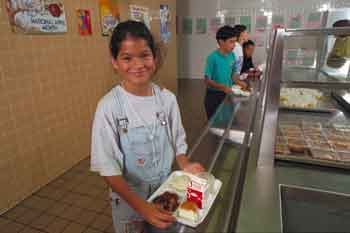SMU with The Hunger Center of North Texas will look at the impact of social networks and social capital
Economics researchers at SMU will analyze the roles social networks and isolation play in fighting hunger in North Texas.
Recent studies have found that household economic resources are not the only factor contributing to food insecurity, according to SMU economist Thomas B. Fomby.
About 1 in 6 U.S. households are affected by food insecurity, meaning there’s not enough food at all times to sustain active, healthy lives for all family members, according to the U.S. Department of Agriculture.




“This study will analyze the role of other factors causing food insecurity, such as urban or rural settings, access to nutrition assistance programs, access to inexpensive groceries, family support and social stigma,” Fomby said.
Fomby, professor of economics and director of the Richard B. Johnson Center for Economic Studies, and Daniel Millimet, SMU professor of economics, are conducting the study. A $120,000 grant from the North Texas Food Bank is funding the research. The study will be complete in March 2014.
Household income a powerful predictor, but social networks play role
Although household income is the single most powerful predictor of food security, poverty and hunger are not synonymous. According to Feeding America, 28 percent of food insecure residents in Dallas County are ineligible for most nutrition assistance programs because they have incomes above 185 percent of the federal poverty level; and the U. S. Department of Agriculture reports that 58.9 percent of U.S. households with incomes below the poverty level are food secure. The reasons for this are not well understood.
“With this research, we expect to better understand the causes of food insecurity in North Texas and improve the assessment of at-risk households,” Fomby said.
The SMU study is one of two major research projects launching The Hunger Center of North Texas, a new collaborative research initiative created by the North Texas Food Bank. The University of North Texas is also collaborating on a study.
The studies will focus on the impact that “social networks” and “social capital” have on household food security. The central questions are:
- How do social relationships and community conditions make it easier (or harder) for low-income households to keep healthy food on the table?
- How do these social and community influences differ in the City of Dallas and rural areas of North Texas?
Groundbreaking research may help leverage social forces to reduce food assistance
“We believe that this research will be groundbreaking,” said Richard Amory, director of research for the North Texas Food Bank. “Nutrition assistance programs tend to approach individuals and households in isolation. Understanding the role that communities play in food security may help us leverage social forces to develop more effective programs and, ultimately, reduce the need for food assistance.”
The studies will start to shed some light on issues related to hunger in the community, said Kimberly Aaron, vice president of Policy, Programs and Research for the North Texas Food Bank.
“In performing our due diligence on existing research, while forming The Hunger Center, it became clear that many factors related to food insecurity are not well understood,” Aaron said.
SMU and the North Texas Food Bank recently formed a partnership, “Stampede Against Hunger,” to build on SMU’s strong support for NTFB, connecting campus groups already working with the food bank, as well as encouraging new types of participation for the campus and alumni community.
SMU support for the food bank has ranged from traditional food drives and volunteer work in the NTFB distribution center, to research for the food bank conducted by students in the Cox School of Business and the Bobby B. Lyle School of Engineering. Faculty and students from the Annette Caldwell Simmons School of Education and Human Development volunteer regularly in NTFB nutrition courses and Fondren Library staff organize a “Food for Fines” drive each year, waiving library fines in exchange for donations of non-perishable food items.
Fomby and Millimet are in the SMU Department of Economics in Dedman College. — Nancy George, and the NTFB
Follow SMU Research on Twitter, @smuresearch.
For more SMU research see www.smuresearch.com.
SMU is a nationally ranked private university in Dallas founded 100 years ago. Today, SMU enrolls nearly 11,000 students who benefit from the academic opportunities and international reach of seven degree-granting schools. For more information, www.smu.edu.
SMU has an uplink facility located on campus for live TV, radio, or online interviews. To speak with an SMU expert or book an SMU guest in the studio, call SMU News & Communications at 214-768-7650.

 Academic achievement improved among students active in structured after-school programs
Academic achievement improved among students active in structured after-school programs
 Ancient tree-ring records from southwest U.S. suggest today’s megafires are truly unusual
Ancient tree-ring records from southwest U.S. suggest today’s megafires are truly unusual







 With children going back to school, parents are concerned that their youngsters are staying fit and eating right, especially those who dine in a school cafeteria.
With children going back to school, parents are concerned that their youngsters are staying fit and eating right, especially those who dine in a school cafeteria.